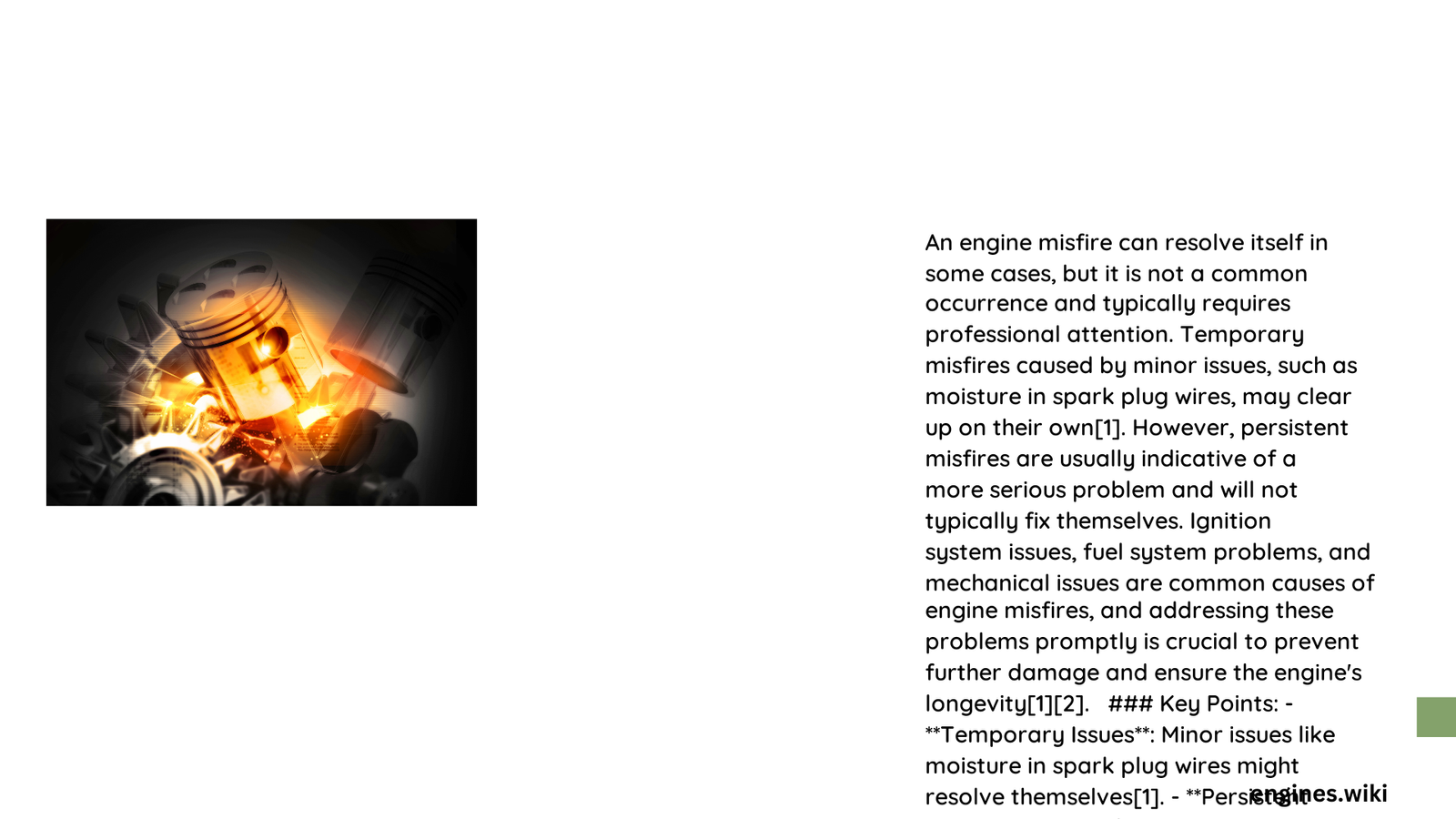Engine misfires represent a complex mechanical issue that demands immediate attention and professional intervention. While vehicle owners might hope for spontaneous resolution, the reality is that misfires typically indicate underlying mechanical problems requiring systematic diagnosis and targeted repairs. These performance disruptions can stem from multiple system failures, including ignition, fuel delivery, and mechanical component degradation, which do not self-correct without specific technical interventions.
Can an Engine Misfire Actually Resolve Without Professional Intervention?
What Prevents Spontaneous Misfire Resolution?
Engine misfires fundamentally cannot resolve themselves due to several critical mechanical constraints:
- Root Cause Persistence
- Mechanical wear does not self-repair
- Component degradation continues without intervention
-
Underlying issues remain active until specifically addressed
-
Potential Escalating Damage
- Continuous misfiring can cause:
- Catalytic converter destruction
- Cylinder wall damage
- Increased fuel consumption
- Reduced engine performance
What Specific Diagnostic Approaches Reveal Misfire Origins?
Comprehensive Misfire Diagnostic Techniques
| Diagnostic Method | Estimated Duration | Required Tools | Potential Cost |
|---|---|---|---|
| OBD-II Scanning | 15-30 minutes | OBD-II Scanner | $0-$100 |
| Compression Test | 45-60 minutes | Compression Gauge | $50-$200 |
| Spark Plug Inspection | 30-45 minutes | Basic Hand Tools | $0-$50 |
What Are Primary Misfire Causative Factors?
Ignition System Failures
- Spark Plug Degradation
- Typical replacement interval: 30,000-100,000 miles
- Replacement cost: $100-$300 per set
-
Direct impact on combustion efficiency
-
Ignition Coil Malfunction
- Potential lifespan: 50,000-200,000 miles
- Replacement cost: $50-$200 per coil
- Critical for consistent electrical discharge
How Do Misfires Manifest Diagnostically?
Symptom Identification Strategies
- Performance Indicators
- Irregular engine vibration
- Unexpected power loss
- Inconsistent acceleration
-
Increased fuel consumption
-
Diagnostic Trouble Codes (DTCs)
- P0300: Random/Multiple Cylinder Misfire
- P0301-P0306: Cylinder-Specific Misfire Detection
What Preventative Maintenance Reduces Misfire Risk?
Proactive Vehicle Care Recommendations
- Regular spark plug replacement
- Consistent fuel system cleaning
- Timely ignition system inspections
- Using high-quality fuel
- Maintaining recommended service intervals
Conclusion: Professional Intervention Is Essential
Engine misfires represent complex mechanical symptoms requiring professional diagnostic expertise. While vehicle owners might hope for spontaneous resolution, systematic professional assessment remains the most reliable approach to preventing potential long-term engine damage.

